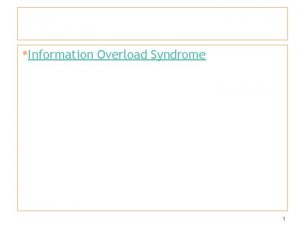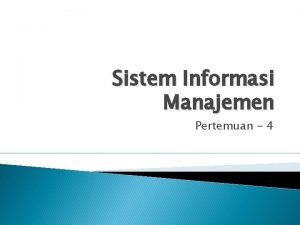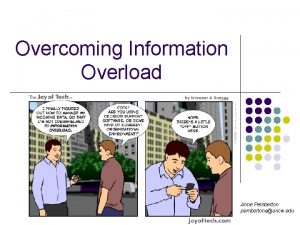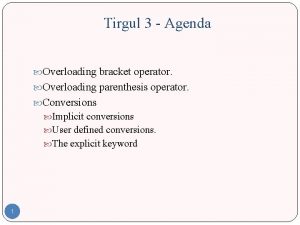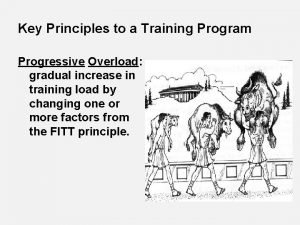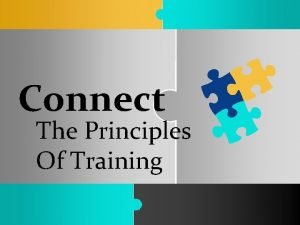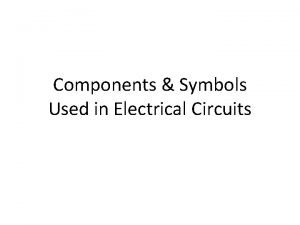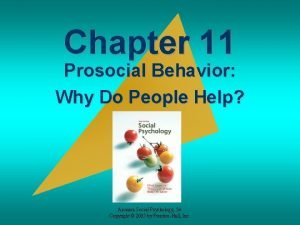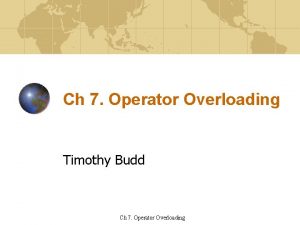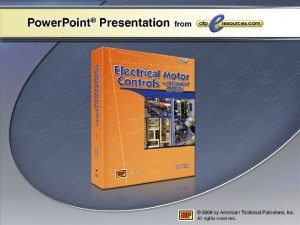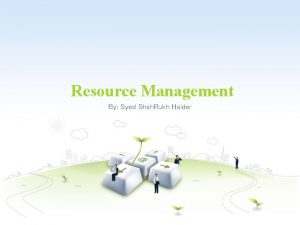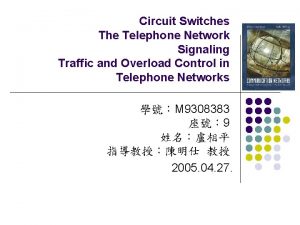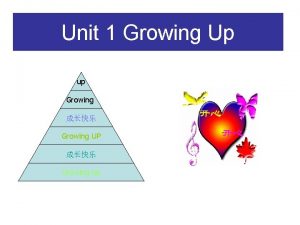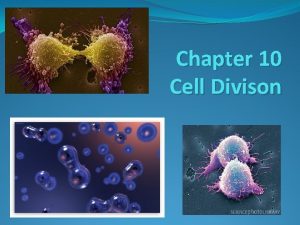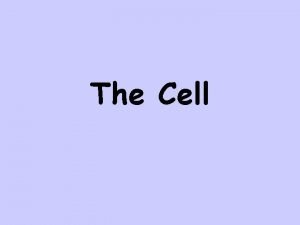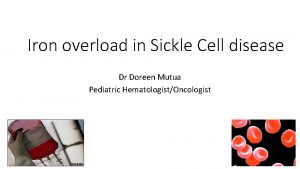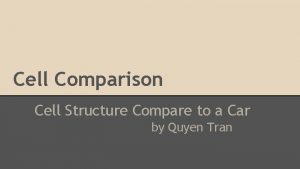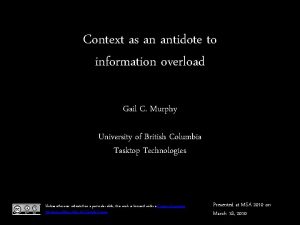Information Overload Compare a cell to a growing




























- Slides: 28

Information “Overload” Compare a cell to a growing town. The town library has a limited number of books. As the town grows, these limited number of books are in greater demand, which limits access. A growing cell makes greater demands on its genetic “library. ” If the cell gets too big, the DNA would not be able to serve the needs of the growing cell.

• Large cells cannot • transport nutrients across membrane A group of smaller cells has a larger surface area than a single cell with the same volume. . .

Traffic Problems To use the town analogy again, as the town grows, more and more traffic clogs the main street. It becomes difficult to get information across town and goods in and out. Similarly, a cell that continues to grow would experience “traffic” problems. If the cell got too large, it would be more difficult to get oxygen and nutrients in and waste out.

Remember, cells must use diffusion and osmosis to obtain important nutrients, like oxygen and glucose

Asexual Reproduction Asexual reproduction is reproduction that involves a single parent producing an offspring. The offspring produced are, in most cases, genetically identical to the single cell that produced them. Asexual reproduction is a simple, efficient, and effective way for an organism to produce a large number of offspring. Both prokaryotic and eukaryotic single-celled organisms and many multicellular organisms can reproduce asexually.

Sexual Reproduction In sexual reproduction, offspring are produced by the fusion of two sex cells – one from each of two parents. These fuse into a single cell before the offspring can grow. The offspring produced inherit some genetic information from both parents. Most animals and plants, and many single-celled organisms, reproduce sexually.

Cell Division - process by which a cell splits into two identical daughter cells Occurs in two main phase: Interphase – cell copies DNA and prepares for division Mitosis – chromosomes separate into two new cells

Prokaryotic Chromosomes Prokaryotic cells lack nuclei. Instead, their DNA molecules are found in the cytoplasm. Most prokaryotes contain a single, circular DNA molecule, or chromosome, that contains most of the cell’s genetic information.

Eukaryotic Chromosomes In eukaryotic cells, chromosomes are located in the nucleus, and are made up of chromatin.

What are chromosomes?

Life Cycle of the Cell • Mitosis = nuclear division • Mitosis is followed by cytokinesis (cell division) • The steps of mitosis ensure that each new cell has the exact same number of chromosomes as the original • Interphase = growth phase, differentiation occurs

The Cell Cycle Interphase (longest phase) G 1 - first growth (gap) phase Synthesis - DNA makes a copy G 2 - second growth (gap) phase, preparing for mitosis Mitosis - nucleus divides, ensuring each new cell has the exact number of chromosomes as parent

• Interphase • Prophase • Metaphase • Anaphase • Telophase • IPMAT

1. chromosomes visible (chromatids) 2. centrioles migrate to the poles 3. nuclear membrane disappears 4. nucleolus disappears 5. spindle forms

1. chromosomes line up on the equator, spindle attaches

1. chromatids separate and move to opposite poles

1. chromosomes disappear • chromatin 2. nuclear membrane reforms 3. nucleoli reappears 4. spindle disappears 5. centrioles duplicate

- division of the cytoplasm to form 2 new daughter cells - organelles are divided - daughter cells are genetically identical Cells return to interphase







1. Name the phases starting at the top.

1. Name the phase 2. Identify X 3. Identify Y

5. Name the phase

6. Name the phase
 Information overload syndrome
Information overload syndrome Intrapersonal barriers of communication
Intrapersonal barriers of communication Example of psychological noise
Example of psychological noise Information overload
Information overload Yang dimaksud dengan information overload adalah
Yang dimaksud dengan information overload adalah Anne pemberton uncw death
Anne pemberton uncw death Information overload
Information overload Information overload research group
Information overload research group What is principles of individuality
What is principles of individuality Overloading parenthesis operator in c++
Overloading parenthesis operator in c++ Prinsip overload adalah
Prinsip overload adalah Borg scale
Borg scale Automatic cylinder reciprocating system
Automatic cylinder reciprocating system What is environment
What is environment Overload symbol
Overload symbol Principle of training
Principle of training Time delay relay coil symbol
Time delay relay coil symbol Urban overload hypothesis
Urban overload hypothesis C++ overload arrow operator
C++ overload arrow operator Simbol thermal overload relay
Simbol thermal overload relay Progressive overload
Progressive overload Contactor symbol electrical
Contactor symbol electrical Overload stream insertion operator c++ template
Overload stream insertion operator c++ template Hr department structure
Hr department structure Cisco nat overload
Cisco nat overload Igmp vs icmp
Igmp vs icmp Spc switching system overload control
Spc switching system overload control Manage personal and professional development
Manage personal and professional development Cell city project animal cell
Cell city project animal cell
